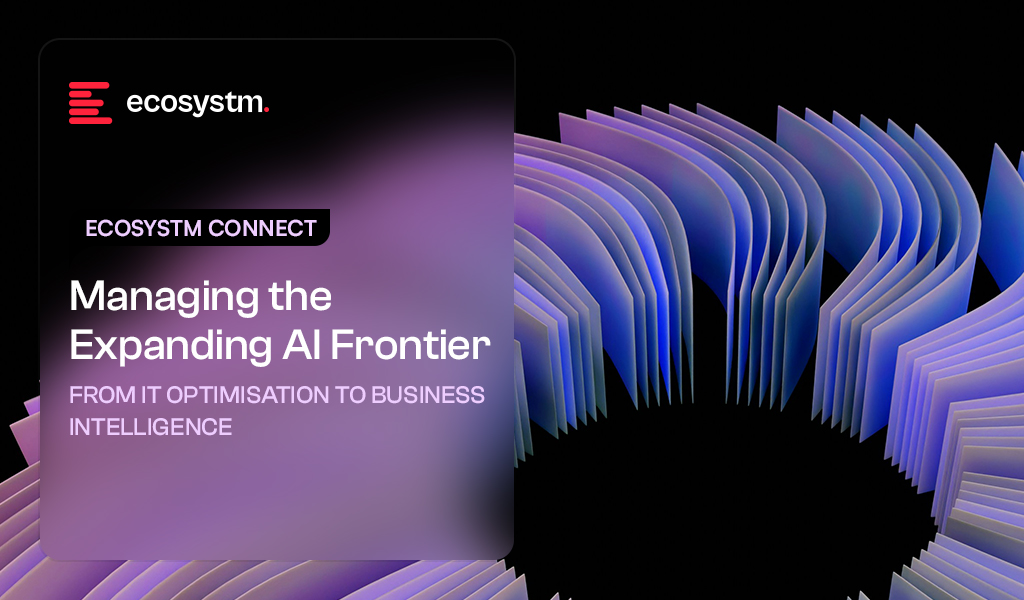AI adoption is no longer a question of if, but how fast and how well. Most organisations are exploring AI in some form, but they’re moving at very different speeds.

The ones seeing the most value share a few traits: cross-functional collaboration, strong leadership sponsorship, and tight alignment between business and tech. That’s how they sharpen focus, deploy critical skills where it matters, and accelerate from idea to outcome.
But the gap between ambition and execution is real. As one executive put it, “We’ve seen digital natives do in 24 hours what takes our industry six months.” The risks of getting it wrong are just as real; think of Zillow’s USD 500M loss from overreliance on flawed AI models.
When done right, AI benefits every part of the organisation; not just data teams.
“Our AI-powered screening for insurance agents fast-tracks candidate selection by analysing resumes and applications to pinpoint top talent.” – HR Leader
“Conversational AI delivers 24/7 customer engagement, instantly resolving queries, easing team workload, and boosting CX.” – CX Leader
“AI transforms work by streamlining workflows and optimising transport routes, making operations faster and smarter.” – Operations Leader
“Using AI to streamline our sales pipeline has cut down the time it takes to qualify leads, enabling our team to focus on closing more deals with greater precision.” – Sales Leader
“We’re unlocking data value: AI agents personalise customer support at scale, while AI-driven network optimisation ensures seamless IT operations.” – Data Science Leader
In the short term, most businesses are focusing on operational efficiency, but the real wins will be in longer-term innovation and financial value.

For tech teams, this means delivering robust, scalable AI systems while supporting responsible experimentation by business teams – all in a fast-moving, high-stakes environment.
However, that’s not easy.
• High Costs. AI requires substantial upfront and operational spend. Without measurable outcomes, it’s hard to justify scaling.
• Security & Governance Risks. AI heightens exposure to bias, misuse, and compliance gaps. Most organisations lack mature guardrails to manage this.
• Regulatory Uncertainty. Shifting global policies make it difficult to design AI systems that are both future-proof and compliant.
• Skills Shortage. There’s a growing gap in AI and data expertise. Without the right talent, even promising use cases falter.
• Data Challenges. AI needs vast, high-quality data, but many organisations struggle with silos, poor lineage, and inconsistent standards.
Yet the toughest obstacles aren’t technical.
• Limited AI Fluency at the Top. Many leaders lack a practical understanding of AI’s capabilities and constraints, slowing decisions and making cross-functional alignment difficult.
• No Clear Ownership or Strategy. Without clear ownership, AI efforts remain scattered across IT, innovation, and business teams, leading to fragmentation, misalignment, and stalled progress.
• Unclear ROI and Benefits. AI’s value isn’t always immediate or financial. Without clear metrics for success, it’s hard to prioritise initiatives or secure sustained investment.
• Short-Term Pressure. The push for quick wins and fast ROI often comes at the expense of long-term thinking and foundational investments in AI capabilities.
• Rigid Business Models. AI demands adaptability in processes, structures, and mindsets. But legacy workflows, technical debt, and organisational silos frequently stand in the way.
• Change Management is an Afterthought. Many AI efforts are tech-first, people-later. Without early engagement and capability building, adoption struggles to gain traction.
Bridging the Innovation-AI Gap: The Power of Ecosystems
Bridging this gap between AI ambitions and success requires more than technology; it needs a coordinated ecosystem of vendors, enterprises, startups, investors, and regulators working together to turn innovation into real-world impact.
Public-private partnerships are key. In Singapore, initiatives like IMDA’s Spark and Accreditation programmes tackle this head-on by spotting high-potential startups, rigorously validating solutions, and opening doors to enterprise and government procurement. This approach de-risks adoption and speeds impact.
• For Enterprises. It means quicker access to trusted, local solutions that meet strict performance and compliance standards.
• For Startups. It unlocks scale, credibility, and funding.
• For the Economy. It creates a future-ready digital ecosystem where innovation moves beyond the lab to drive national competitiveness and growth.

Customer Success leaders are keenly aware of AI’s burgeoning potential, and our latest research confirms it. AI is no longer a futuristic concept; it’s a present-day reality, already shaping content strategies for 55% of organisations and poised to expand its influence across a multitude of use cases.
Over the past two years, Ecosystm’s research – including surveys and deep dives with business and tech leaders – has consistently pointed to AI as the dominant theme.
Here are some insights for Customer Success Leaders from our research.
Click here to download “AI Stakeholders: The Customer Success Perspective” as a PDF.
AI in Action: Real-World Applications
The data speaks for itself. We’re seeing a significant uptake of AI in automating sales processes (69%), location-based marketing (63%), and delivering personalised product/service recommendations (61%). But beyond the numbers, what does this look like in practice?
In Marketing, AI tailors campaigns in real time based on customer behaviour, ensuring content and offers resonate. For e.g. in the Travel industry, AI analyses customer preferences to create customised itineraries, boosting satisfaction and repeat bookings. In Sales, AI-driven analysis of buying patterns helps teams stay ahead of trends, equipping them with the right products to meet demand. In Customer Experience, AI-powered feedback analysis identifies pain points before they escalate, leading to proactive problem-solving. We have already seen organisations using conversational AI to enable 24/7 customer engagement, instantly resolving issues while reducing team workload and enhancing CX.
Challenges and Opportunities: Navigating the AI Landscape
However, the path to AI adoption isn’t without its hurdles. Customer Success leaders face significant challenges, including the lack of an organisation-wide AI strategy, data complexity and access issues, and the cost of implementation.
Despite these challenges, the focus on AI to enhance Customer Success is evident, with nearly 40% of AI initiatives geared towards this goal. This requires a more active role for these leaders in shaping AI strategies and roadmaps.
Our research reveals that there lies a critical gap: Customer Success leaders have limited involvement in AI initiatives. Only 19% are involved in identifying and prioritising use cases, and a mere 10% have input into data ownership and governance. This lack of participation is a missed opportunity.
The 2025 Vision: AI-Driven Customer Success
Looking ahead, Customer Success leaders expect AI to deliver significant benefits, including improved customer experience (56%), increased productivity (50%), and enhanced innovation (44%). These expectations underscore AI’s pivotal role in shaping the future of customer success.
To fully harness AI’s potential and advancements like Agentic AI, leaders must take a more active role. This means driving a clear AI strategy, tackling data challenges, and working closely with IT and data science teams to ensure AI solutions address real customer pain points and business gaps.






















